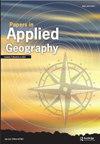Geospatial Analysis of Vaccination Coverage and Predictors of Non- and Under-Vaccination of Children Aged 12–23 Months in Nigeria
Q2 Social Sciences
引用次数: 5
Abstract
Abstract This study (1) examines the spatial variation of uptake for each dose of basic vaccine and (2) identifies the predictors of non- and incomplete vaccine uptake among children aged 12–23 months in 2018 using data from NDHS. Spatial statistical techniques and multinomial logistic regression analyses were employed. Findings indicate wide variation of coverage at regional, urban/rural, and district levels. Coverage for all the vaccines exhibited statistically significant spatial dependence nationally. Locally, vaccination coverage hotspot for all the vaccines clustered among 16 states in the south while cold spots were in seven northern states. Of the 6059 children, 25, 56, and 9 percent were fully vaccinated, under-vaccinated, and non-vaccinated, respectively. Children who did not receive postnatal care, had no health card, resided in poorer households, and whose mothers did not receive tetanus injection had higher odd of being non-vaccinated. Children, who were delivered at home, did not receive postnatal care, whose mothers could not read and lived in poorest, poorer, and middle households had increased risk of being under-vaccinated. Findings suggest that increased access to immunization, community-level health education and communication are required particularly in rural and northern districts.尼日利亚12-23个月儿童疫苗接种覆盖率和未接种和接种不足预测因素的地理空间分析
本研究(1)研究了各剂量基本疫苗接种的空间差异;(2)利用国家人口健康调查(NDHS)的数据,确定了2018年12-23月龄儿童未接种和不完全接种疫苗的预测因素。采用空间统计技术和多项逻辑回归分析。调查结果表明,在区域、城市/农村和地区各级,覆盖率存在很大差异。所有疫苗的覆盖率在全国范围内表现出统计学上显著的空间依赖性。在当地,所有疫苗接种覆盖的热点集中在南部的16个州,而冷点在北部的7个州。在6059名儿童中,分别有25%、56%和9%的儿童接种了完全疫苗、接种不足疫苗和未接种疫苗。未接受产后护理、没有保健卡、居住在较贫穷家庭以及其母亲未接受破伤风注射的儿童未接种疫苗的比例较高。在家分娩的儿童没有得到产后护理,其母亲不识字,生活在最贫穷、较贫穷和中等家庭的儿童接种疫苗不足的风险增加。调查结果表明,特别是在农村和北部地区,需要增加获得免疫接种、社区一级卫生教育和交流的机会。
本文章由计算机程序翻译,如有差异,请以英文原文为准。
求助全文
约1分钟内获得全文
求助全文

 求助内容:
求助内容: 应助结果提醒方式:
应助结果提醒方式:


